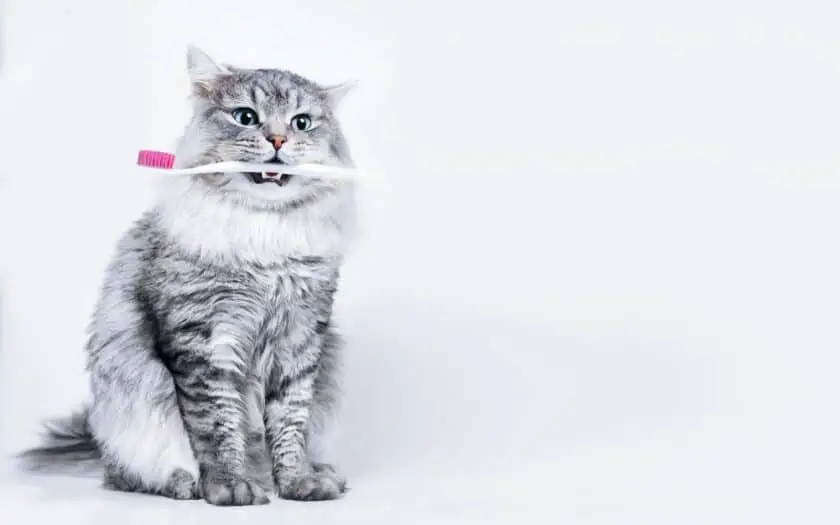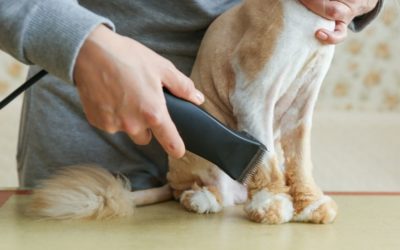Did you know that over 60% of cats have dental problems by the time they reach the age of 3? So kudos to you for finding this article! Not only does it show you’re invested in your furry friend’s oral health, but you’re also potentially saving hundreds of dollars in future dental treatments!

How to start from scratch (Step-by-step)
Brushing is the most effective way to remove bacteria (you know, those buggers that want to cause bad breath, tooth loss, and all the other bad stuff). But getting your cat to accept a toothbrush will require some conscious effort and persistence on your part. Luckily, we’ve outlined all the steps for you. Let’s dive in!
Step 1: Preparations (3 days)
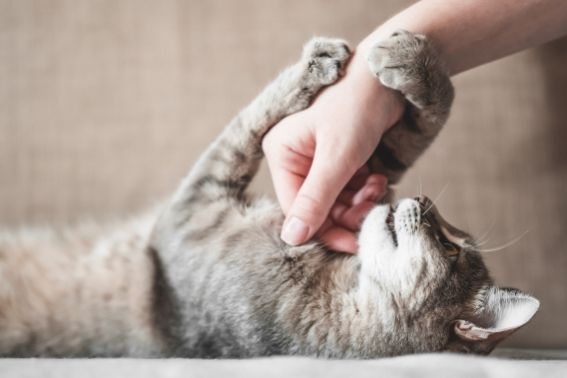
Cats are naturally scared of new things, so let’s start out small. For this first step, gently touching your cat on the head, cheeks, and chin a few times a day will get it used to the sensation of being touched around the general area of the mouth.
This might seem like a tiny step, but it is an important one that should not be skipped!
Step 2: Brush with your finger (7 days)
After completing the first step, your cat will probably start to feel a bit more comfortable being touched, which should allow you to gently grab and pull up the upper lip, exposing the upper teeth. In line with our decision to take things slow, let’s go just a small step further by ever so gently touching just a single tooth with only your finger.

If your cat didn’t rip you a new one, congrats for making it this far! You can now try to rub the tooth for as long as your cat will allow it. If this doesn’t provoke too much anxiety, move on. If not, keep trying.
Repeat for seven days, and notice that your cat will become more comfortable with the teeth being touched. Make sure to reward each successful session with a treat!
Tip: Before moving on to step 3, you may perform the same routine, but this time with a piece of gauze wrapped around your finger. This will already feel a bit more like actual brushing.
Step 3: The introduction of toothpaste (7 days)
The next step is to add some pet toothpaste to your finger. We can highly recommend this fish-flavored toothpaste as it will make brushing less of a horror experience. Remember that adding toothpaste is another major leap of confidence, because it involves something new. So give your cat plenty of time to discover the toothpaste before attempting to rub it onto the teeth.

Step 4: Introduce the pet toothbrush
When your kitty’s never seen a brush before, a gentle introduction is your best bet. Sticking a foreign object into a cat’s mouth will likely cause serious trauma, and trauma never makes things any easier. For the introduction, simply show the brush to your kitty, and give plenty of time to sniff and discover the object. Why? Because cats love familiarity; if they’ve seen and touched an object before, they will feel more relaxed in the future. Now you know why cats are always going around sticking their nose in everyone’s stuff!
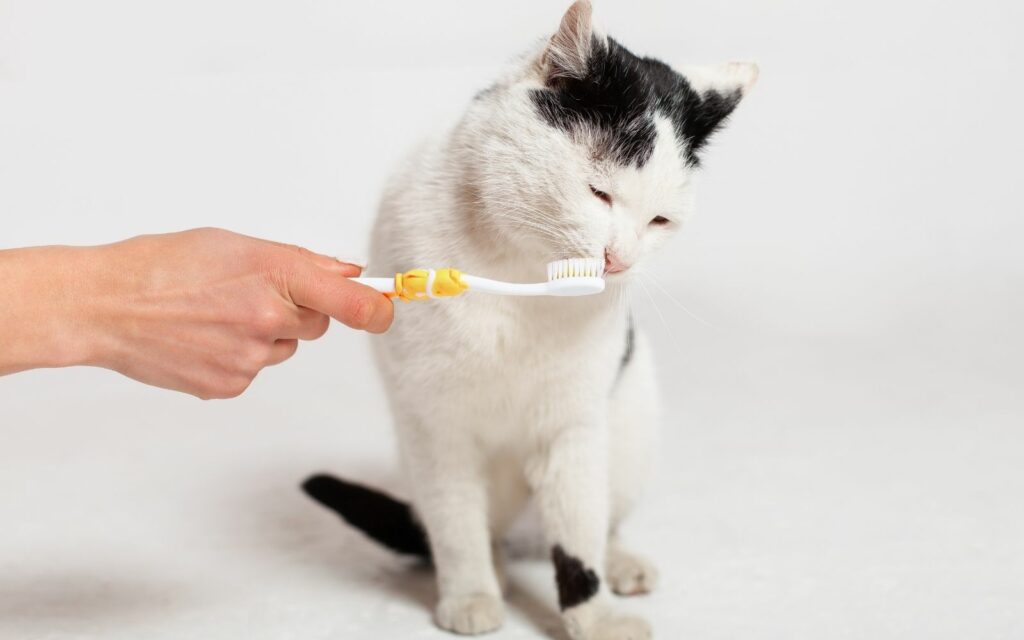
Step 5: Brushing
So, now that your cat has had time to explore the brush, the time has come to do the actual brushing. Apply a tiny bit of toothpaste to your cat toothbrush and start by initially rubbing just a single tooth. See how your cat responds. If everything is ok, you can try to brush a little more. If there is too much stress, you may have to go back one or two steps to build more comfort.
Keep pushing the boundaries by just a tiny bit, until your cat is no longer uncomfortable having her teeth brushed. Slow and steady wins the race!

Brushing Tips
As for how to do the actual brushing, we will now include some tips to set you on the right track:
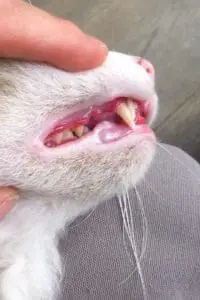
How to hold your cat
Take the cat in your lap and gently hold its head with one hand. You can use your thumb to push the lips up and down to expose the front teeth, using the other hand to apply the brush. Molars are a little harder to reach, so save those for later.
Rub two or three times per tooth
Whereas humans need to brush their teeth thoroughly to get them clean, that is not a necessity here. You also don’t need to apply a lot of pressure; gently rubbing the outside of the tooth a few times should be sufficient. The ingredients in the toothpaste will do the rest.
Keep it short and positive
You’re not in a rush to complete each step, and you don’t have to brush everything in one go. It’s perfectly fine to brush only a few teeth at a time, especially when your cat is still getting used to having her teeth brushed.
If something produces too much anxiety, don’t keep pushing. Most cats need time to become familiar with new things.
Mix toothpaste with something tasty
If the toothpaste tastes too strong, you can make it slightly more palatable by mixing in a bit of liquid from canned tuna or some wet food. Alternatively, you can buy pet toothpaste with a special flavor.
Frequently Asked Questions
Most vets suggest that brushing once a week is enough to prevent plaque, cavities, and periodontal disease.
No! The fluoride in your toothpaste is toxic, and a big, sturdy brush can easily do a lot of damage to the tender mouth of a cat.
If brushing is not an option, you can combat bacterial growth by purchasing plaque wipes and a vet approved dental water.

